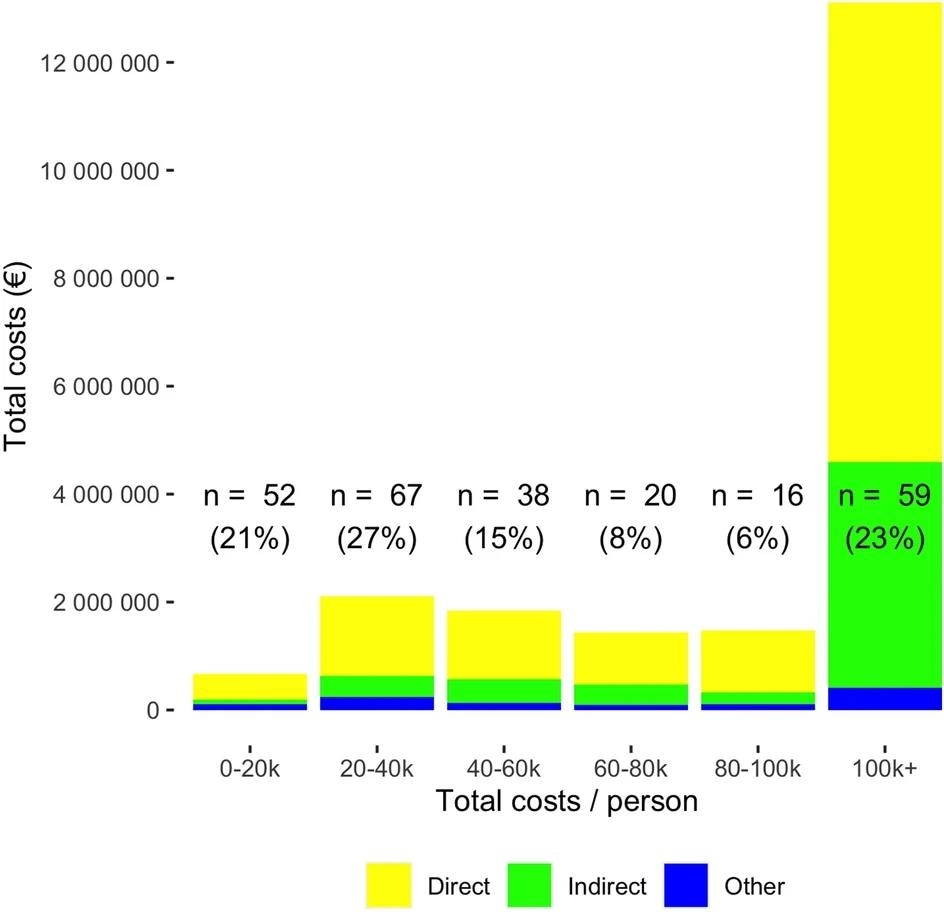Traffic injuries cause substantial financial strain on society. Around 1.3 million individuals succumb to road traffic-related injuries annually. Furthermore, road traffic injuries are estimated to account for 3% of many countries' GDP. However, studies on injury-related costs at the national or international level are scarce.
A 2020 survey across 32 European countries revealed that the average costs per severe road traffic injury were between € 28,205 and € 975,074. Notably, there was substantial heterogeneity in the definition of injury and methodologies of cost calculations between countries. Moreover, the usability of such cost estimations is limited.
 Study: Cumulative costs of severe traffic injuries in Finland: a 2-year retrospective observational study of 252 patients. Image Credit: Jamo Images / Shutterstock
Study: Cumulative costs of severe traffic injuries in Finland: a 2-year retrospective observational study of 252 patients. Image Credit: Jamo Images / Shutterstock
About the study
In the present study, researchers calculated the cumulative costs of severe traffic injuries in Finland. Patients with severe injuries from traffic accidents treated at the high dependency unit (HDU) or intensive care unit (ICU) of the Tampere University Hospital during 2013-17 were screened for eligibility.
Patients admitted to HDU or ICU for traffic-related injuries, having a new injury severity score ≥ 16, and Finnish personal identification numbers were included. Patients with missing cost data were excluded. All subjects also met the criteria for maximum abbreviated injury score ≥ 3, the European Commission definition for severe injury.
The American Society of Anesthesiologists (ASA) physical status classification system was used to assess physical health. Data on two-year mortality and causes were acquired from Statistics Finland. Treatment costs within two years after the accident were obtained from a motor insurer's center. Costs were categorized as indirect, direct, and others. Direct costs included inpatient treatment, outpatient visits, rehabilitation, and medicine reimbursement.
Indirect costs comprised disability pension and compensation for income loss or permanent functional limitation. Other costs were compensation for temporary pain and funeral expenses. Injury causes were stratified into car-related, motorbike-related, bicycle/pedestrian auto accidents, and other miscellaneous injuries (e.g., collision with trains).
Findings
In total, 314 patients with severe traffic injuries were treated at the hospital. Of these, only 252 patients had detailed costs. Costs were unavailable for 62 subjects whose injuries were caused by attempted suicide or who were heavily intoxicated. Patients were aged 43.3, on average. Eleven patients succumbed to their injuries within a few days post-injury.
Besides, there were four and eight non-injury-related deaths at and after the end of the two-year follow-up, respectively. The total costs for severe traffic injuries were € 20 million during the two years of follow-up. Most costs were direct (69.1%), followed by indirect (28.4%) and other costs. The median total cost was € 41,202.
Most costs (> 63%) were caused by 23.4% of patients whose costs exceeded € 100,000. Besides, 77.7% of costs occurred in the first year. The median total costs for 11 deceased patients were € 29,667. Patients with higher injury severity scores and those with injuries to the pelvis or lower extremities had higher total costs.
Further, patients with elevated severity scores and those with lower extremities or face injuries had higher direct costs. Patients aged 18–64 and medium/high education levels had significantly higher indirect costs. Further, subjects with injuries to the lower extremities, face, or neck had significantly higher other costs.

Absolute cumulative two-year costs of different cost categories in 252 patients.
Conclusions
In sum, the study examined the costs of severe traffic injuries in Finland over two years (post-injury). Data indicated that over two-thirds of costs were direct costs, and three-fourths were incurred within the first year after the injury. Fewer than a quarter of severe traffic injuries caused the most costs. The relative proportions of indirect and direct costs were constant, irrespective of the total cost amount.
Besides, the direct costs increased with injury severity, with high costs associated with injuries to the face, pelvis, or lower limbs. Moreover, nearly all patients with facial fractures had an intracranial injury. Patients of working age and those with higher levels of education had increased indirect costs. Further studies are required to explore the factors driving the highest costs.
Journal reference:
- Riuttanen A, Karjalainen E, Jokihaara J, Huttunen TT, Mattila VM. Cumulative costs of severe traffic injuries in Finland: a 2-year retrospective observational study of 252 patients. Sci Rep, 2024, DOI: 10.1038/s41598-024-61184-2, https://www.nature.com/articles/s41598-024-61184-2